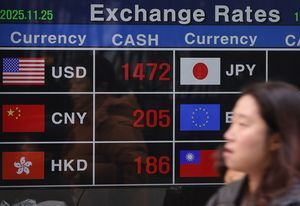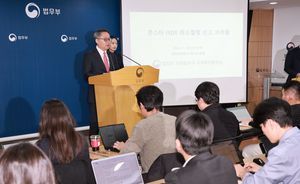China’s AI Talent is Overtaking the US: Global AI Development Trends Will Be Divided
Daniel Kim Views
The race for supremacy in artificial intelligence (AI), led by U.S. tech giants, is being fiercely pursued by China. Despite a gap of over a year in the development of massive AI due to U.S. sanctions on AI semiconductor exports, China is fighting back with a quantity offensive based on its large population. Although most advanced AI researchers are still heading to the U.S., the number of top-tier AI research institutions bearing the names of Chinese universities and companies is rapidly increasing as the number of AI talents from China grows. While the U.S. has successfully hampered China’s progress by blocking semiconductor supplies, it hasn’t been able to prevent the cultivation of the brains responsible for AI development.

| Photo provided by Baidu |
On the 31st (local time), U.S. economic broadcaster CNBC reported, “China is significantly behind the U.S. in the race for large language models (LLMs) being developed by OpenAI and Google, but the number of undergraduates studying AI in China is three times that of the U.S., and the proportion of Chinese among top-level AI researchers in the U.S. is also increasing.”
The IT industry currently estimates a 1-2 year gap in the development of massive AI between the United States and China. China is currently developing most of the LLMs, which are variants of LAMA, developed and open-sourced by Meta. However, they lag in performance compared to OpenAI GPT and Google Gemini. Implementing recent video creation AI like OpenAI’s Sora is also challenging for China. Moreover, the United States leads the scale of AI startup investments. Last year, AI startup investments in the US amounted to 1,151 cases and $31 billion; in China, it stopped at 68 cases and $2 billion. Last year, the investment amount for Chinese AI startups was less than $5.5 billion in 2022.
The restriction on semiconductor exports, which has hindered the development of high-performance AI, is also fatal for China. The learning speed gap between the U.S. and China is inevitably widening. Bernard Leong, CEO of Singapore tech advisory firm Analyse Asia, pointed out to CNBC, “Chinese AI developers can’t avoid the geopolitical vulnerability of depending on American hardware,” and “The desire of the state to maintain control is also slowing down the acceleration of AI development.”
On the other hand, China’s share in the AI talent market is rapidly increasing. According to U.S. think tank Marco Polo, the nationality proportion of the top 2% of AI researchers based on undergraduates was 35% U.S., 12% India, and 10% China in 2019. Still, in 2022, it became 28% U.S., 26% China, and 7% India. The countries where top AI researchers work after graduation were overwhelmingly the U.S. at 65% in 2019, with China classified as other, but in 2022, the U.S. share decreased to 57%, and China took up 12%. There are also many Chinese working in AI research institutions in the U.S. As of 2022, 38% of top AI researchers working in U.S. institutions are from China, surpassing the 37% from the U.S.
As the talent pool for AI research continues to expand, Chinese institutions are also gaining prominence in ranking top AI research institutions. In 2019, China had only two institutions, Tsinghua University (9th place) and Peking University (18th place), in the top 25 global AI research institutions based on the number of top-cited researchers hired. However, in 2022, China has six institutions on the list, including Tsinghua University (3rd place), Peking University (6th place), the Chinese Academy of Sciences (14th place), Shanghai Jiao Tong University (17th place), Zhejiang University (23rd place), and Huawei (25th place), following the 15 from the U.S.
China’s strategy of increasing its user base also proves effective in securing AI users. Baidu’s Ernie Bot, launched last August, secured 100 million users just four months after its release. Samsung Electronics also installed Ernie AI on its Galaxy S24 for the Chinese market because using American AI was impossible in China. Apple is also said to be discussing the application of Ernie AI to the iPhone 16 in China. Many startups are also jumping into AI development based on the huge domestic market.
CNBC explained, “Large Chinese tech companies like Baidu, Alibaba, ByteDance, and Tencent are supporting AI startups,” and “If the current trend continues, the AI development trend is expected to be divided between the U.S. and China, as the use of each other’s AI is impossible in both countries.”










Most Commented